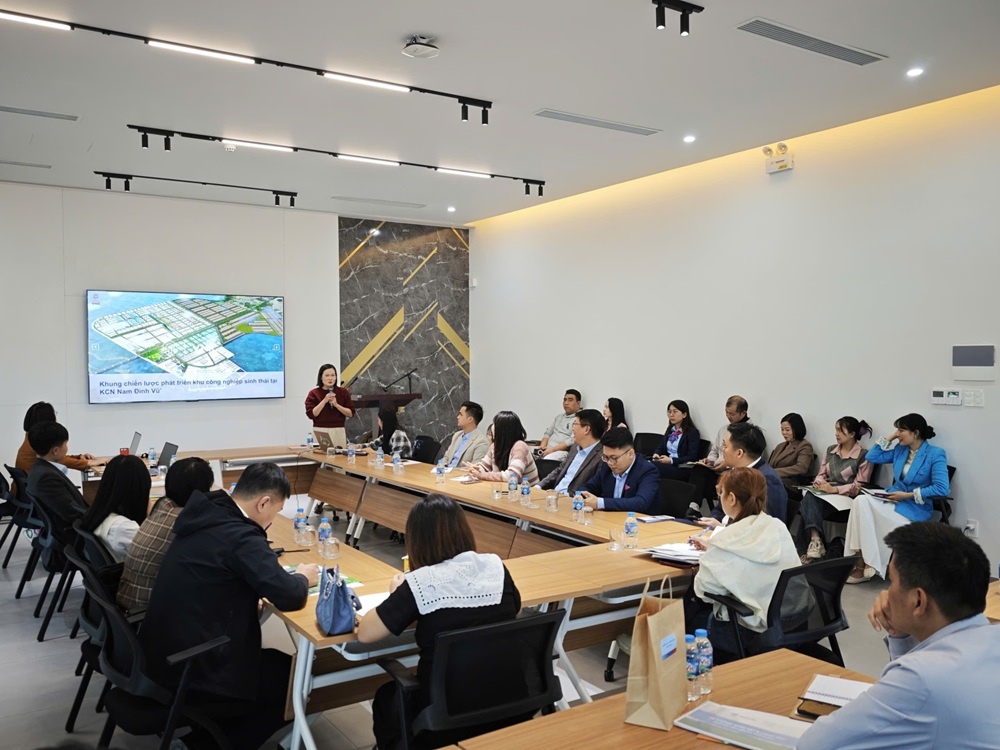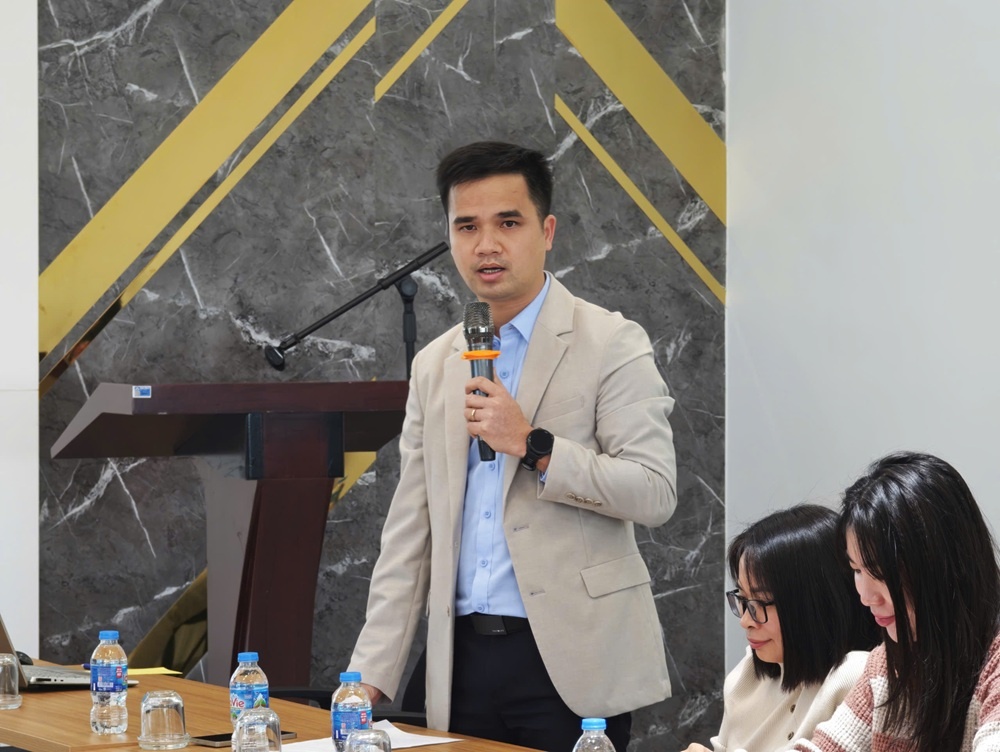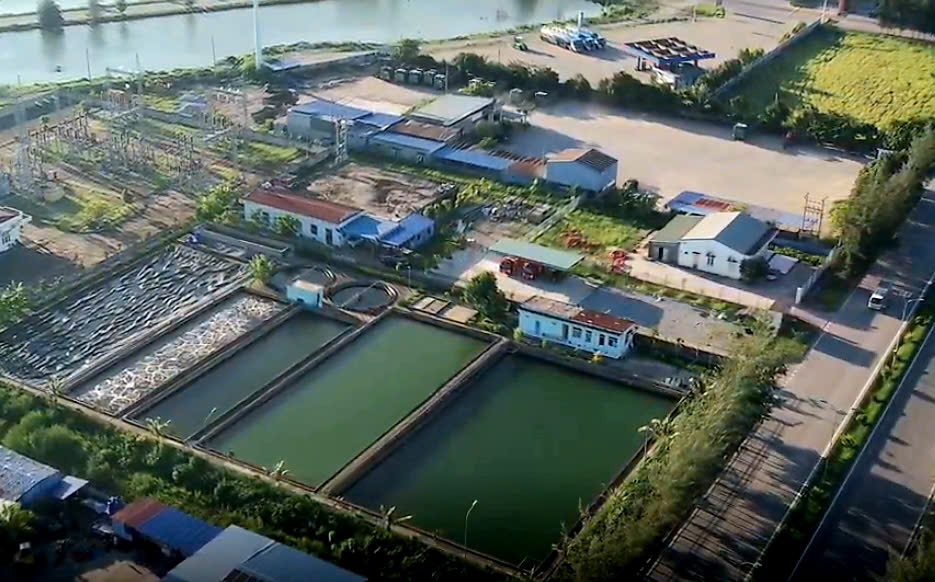The Management Board of Nam Dinh Vu IP (Sao Do Group), in collaboration with social enterprise Green In Vietnam JSC, held a seminar on November 21 themed "'Promoting Green IP Models: Symbiosis - Circularity - Low Emissions", aiming to share experiences, connect businesses, and accelerate practical implementation of eco-industrial park models.
 |
| The seminar overview |
The seminar focused on providing the latest information on national policies related to greenhouse gas (GHG) emission reduction, introducing practical industrial symbiosis models, connecting businesses within the park to identify cooperation opportunities, share resources, and propose a roadmap for establishing an industrial symbiosis network in Nam Dinh Vu for 2025-2030.
At the seminar, Luong Xuan Dam, director of Nam Dinh Vu IP's Management Board, said that in the context of Vietnam implementing international commitments on GHG emission reduction and enforcing Decree No.08/2022/ND-CP on the circular economy and Decree No.06/2022/ND-CP on the mitigation of GHG emissions, industrial parks play a crucial role in the transition to a sustainable development model.
“Nam Dinh Vu IP, with its large scale and diverse industries such as logistics, warehousing, chemicals, food, and industrial services, has favourable conditions to establish and expand industrial symbiosis models, reuse resources, and reduce emissions,” he noted.
 |
| Luong Xuan Dam, director of Nam Dinh Vu IP's Management Board |
At Nam Dinh Vu IP, as a major infrastructure investor in northern Vietnam, Sao Do Group has been implementing various clean production and energy solutions.
From the planning stage, sub-zones have been arranged in a closed supply chain, enabling businesses to utilise each other's outputs, reduce production and transportation costs, and minimise waste generation. Companies operating there have also agreed to prioritise environmentally friendly technologies, save energy, and gradually join the green production network.
Based on the Vietnamese Eco-Industrial Park (EIP) Criteria and United Nations Industrial Development Organisation (UNIDO) framework, Sao Do Group has identified clear symbiosis opportunities in by-products, water, energy, and logistics among businesses; infrastructure for water supply and drainage, wastewater treatment, and seaports ready to support resource sharing.
Many IP-based companies are prepared to pilot waste recycling, water reuse, heat recovery, and rooftop solar power; Nam Dinh Vu IP's management board has strong coordination capacity to move quickly from assessment to practical implementation.
Tran Thi Van Thuy, deputy director of the IP Management Board, stated that in July 2024, Nam Dinh Vu IP invited experts to assess and orient eco-industrial park development, achieving about 40 per cent compliance with international eco-industrial park standards compared to set requirements. These results partly confirmed Nam Dinh Vu IP's potential to become an emerging green IP.
At the seminar, Nguyen Thi Ha, net zero and GHG reduction expert from Green In Vietnam JSC, shared insights on the link between eco-industrial parks, circular economy, and GHG reduction.
"The eco-IP model is a driving force for the circular economy, serving as an effective means to achieve a circular economy and enhance the competitiveness of businesses and industries. Eco-industrial parks are considered a key solution for transforming the sustainable growth model, contributing to Vietnam's commitment to achieving net-zero emissions by 2050," she said.
Meanwhile, Vu Duc Huynh, head of administration at Global Module Centre JSC in Haiphong, said, “Currently, we are applying several models and approaches to participate in the green transition. These include using green, clean, and recyclable materials; investing in energy systems such as rooftop solar power and LED lighting for factories; and increasing the use of natural light.
“Additionally, we are improving production processes to minimise emissions and waste; strengthening waste control efforts, and classifying solid, hazardous, and general waste for transfer to specialised treatment units.”
 |
| Sao Do Group is committed to providing maximum support to build a truly green, circular, and low-emission Nam Dinh Vu IP together with businesses |
This seminar served as a bridge and forum for the local business community to connect and share experiences with businesses that have implemented green and sustainable development models.
During 2026-2030, the roadmap for establishing an industrial symbiosis network at Nam Dinh Vu IP will include assessing resource use and GHG emissions; planning resource management and emission reduction; implementing green solutions such as rooftop solar power, methane recovery from wastewater treatment, and green warehouses; training businesses on the circular economy and emission reduction; and obtaining certifications and disclosures for net-zero and carbon neutrality, as well as preparing ESG reports.
In addition, Sao Do Group is set to focus on four main directions: developing industrial symbiosis; promoting the circular economy; building low-emission IPs through energy saving, renewable energy, and emission monitoring; and connecting green financial mechanisms and support programmes to reduce initial investment costs.
This is not only a legal requirement but also an opportunity for businesses to improve efficiency, reduce costs, and meet global supply chain standards.
Sao Do Group is committed to continuing maximum support to build a truly green, circular, and low-emission Nam Dinh Vu IP together with businesses.
















































